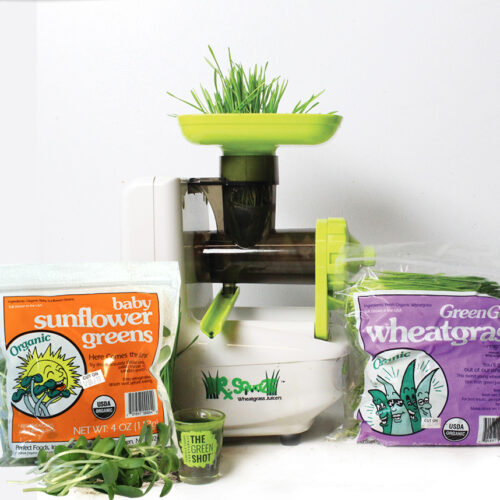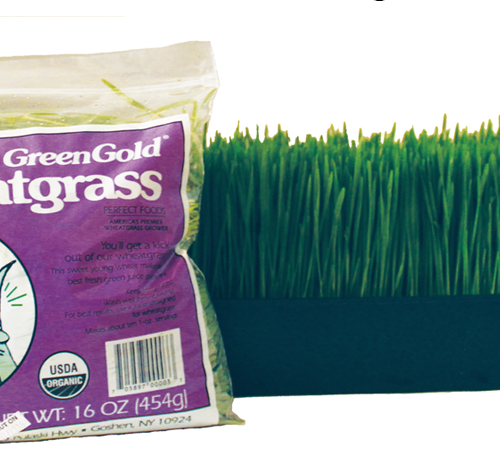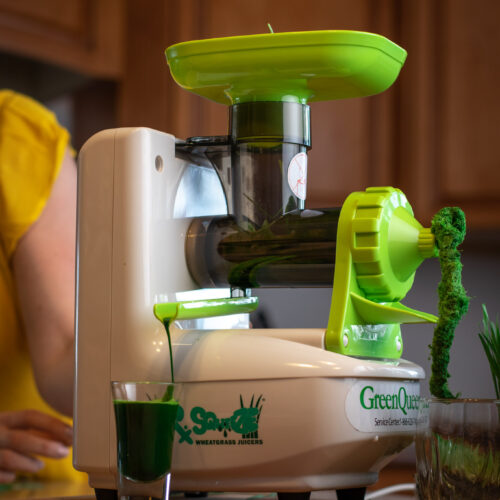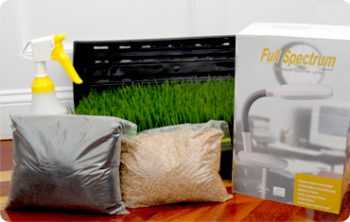Wheatgrass Benefits For Health
What is Wheatgrass?
Wheatgrass is young wheat (only 7-10 days old) which is usually squeezed in a wheatgrass juicer into a super-nutritious green juice.
With hundreds of vitamins, minerals, & phytonutrients all balanced for what the body needs, wheatgrass is a powerful superfood. Thousands of health-conscious people drink this juice daily to experience the amazing wheatgrass benefits for health, and you can too.

-
Fresh Wheatgrass Starter Package
Starter Packages$184.49Original price was: $184.49.$168.49Current price is: $168.49.
-
Frozen Wheatgrass Juice
Wheatgrass $68.25 – $275.00 This product has multiple variants. The options may be chosen on the product page
Available ONLY by Direct Delivery
Juice At Home
-
Wheatgrass – Fresh, Organic
Wheatgrass $18.50 – $24.00 This product has multiple variants. The options may be chosen on the product page
Get it Delivered or Shipped. Juice in a Wheatgrass Juicer.
$40 Minimum
+ $10 Delivery Fee
(FREE over $100)
Wheatgrass Benefits
Thousands of people over the past 40+ years who regularly drink Perfect Foods’ wheatgrass have reported they experience these amazing health benefits*
Total Body Health
Mental & Physical
Energy
Alert, Active, & Well Rested
Younger Apearance
Hair, Skin, & Nails
Stable Blood Sugar
Safe for Those with Diabetes
Boost Immune System
Your Best Defense
Reduced Inflammation
Improved Digestion
Increased Fertility
*These statements have not been evaluated by the FDA. Wheatgrass is not intended to diagnose, treat, cure, or prevent any disease. Wheatgrass is a food, not a drug or dietary supplement.
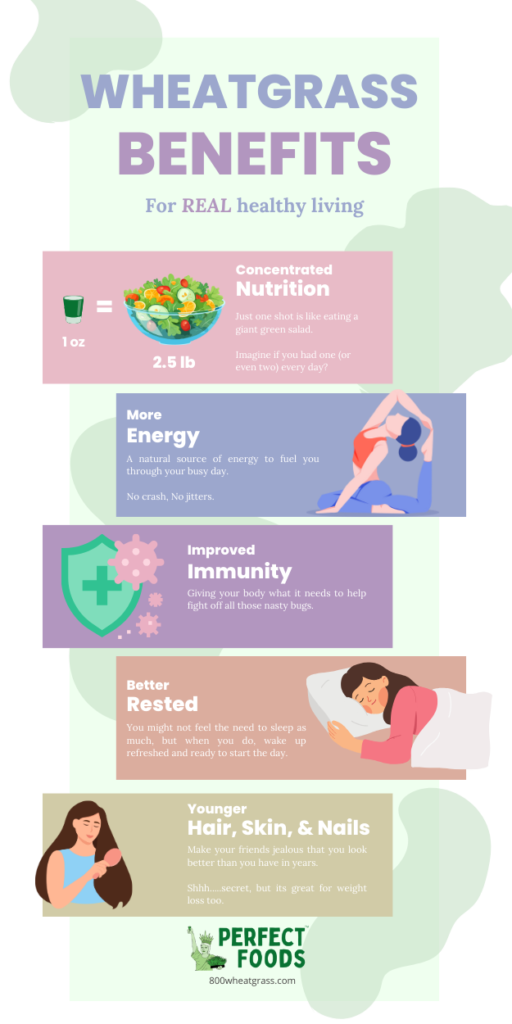
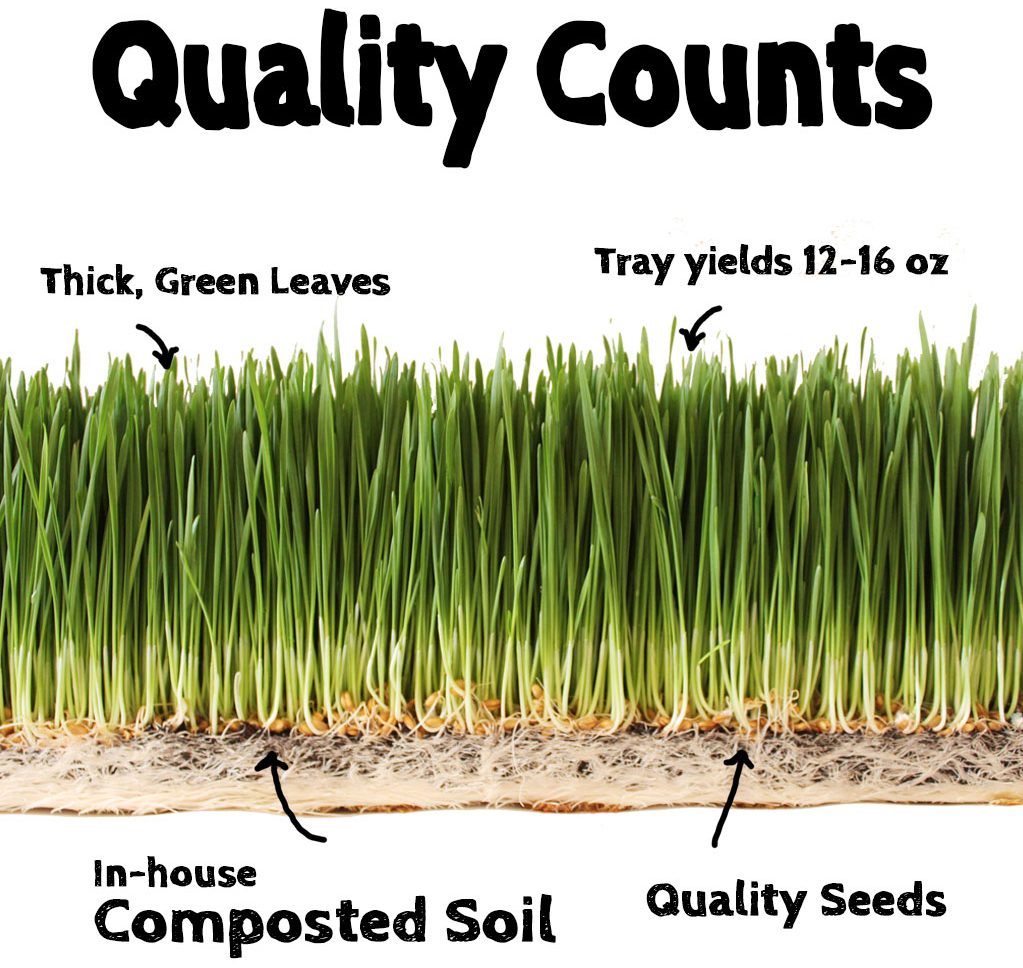

Perfect Foods is known as the world’s premier grower of wheatgrass. You can expect our wheatgrass to reliably be deep green, packed with nutrition, soil-grown (never hydroponic), and certified organic. Those who have tried other wheatgrass usually agree ours is significantly more intense in flavor and potency. The exceptional color, smell, and taste of the juice indicates the optimal health of the plants, and its superior nutrition.
Fresh Is Best
If you’re going to drink wheatgrass, its important to have the highest quality you can find. Wheatgrass which is hardly green or grown hydroponically won’t have the same nutrition needed for the optimal health benefits.
Its also important to make sure you drink Fresh wheatgrass juice rather than powders or bottled HPP juice. Any extreme process risks damaging the delicate nutrients found in wheatgrass, destroying its healing properties.
Read more about this in the FAQ section below.
“How do you know if wheatgrass is good? When it makes the hairs on the back of your neck stand up!”
– Harley Matsil (Owner)
Getting Started...
Drink Wheatgrass Daily for Maximum Benefits
Try at least a 1 oz shot each day for 5 days in a row (to see how you feel). For full wheatgrass benefits, drink 2 oz in the morning and 2 oz in the afternoon.
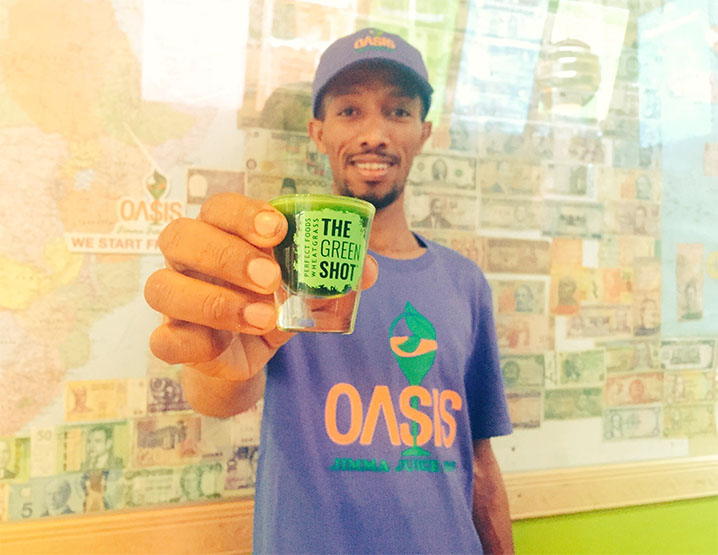

Find a Juice Bar
Ask for a freshly juiced wheatgrass shot at over 400 locations in the NY region which we deliver to.
Find a Store
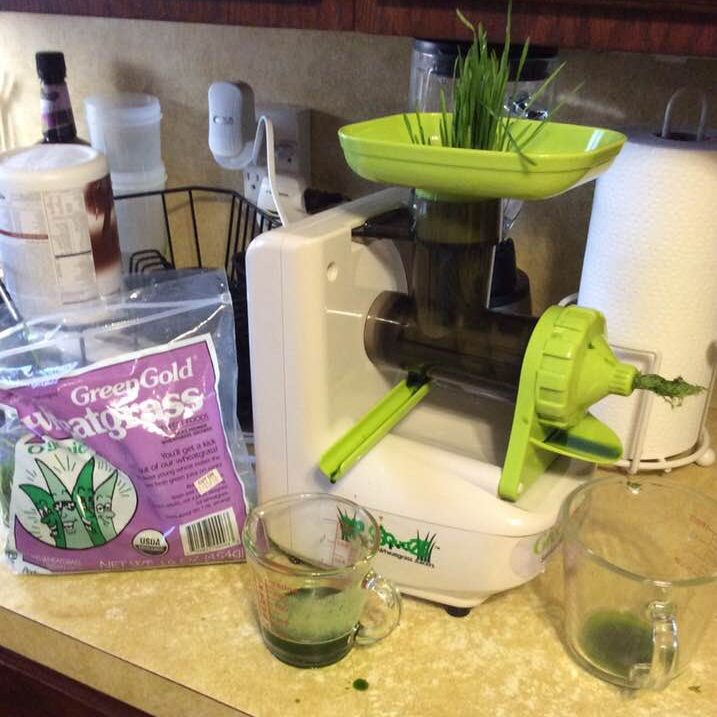

Juice at Home
1. You will need a wheatgrass juicer.
2. You will need fresh wheatgrass.
a) Home Delivery
b) Purchase Locally
c) UPS shipment
d) Grow it yourself
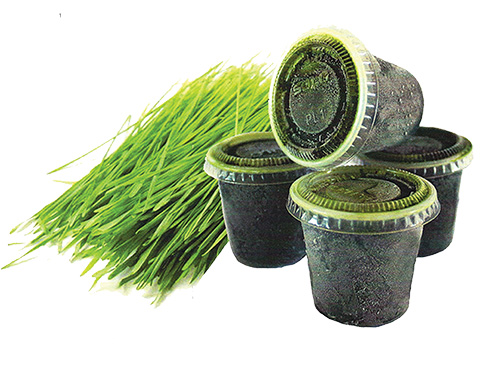

Frozen Juice
About 80% as effective (our opinion), but much more convenient. Get it delivered to your home.
More info on Frozen Here.
Testimonials
-Mike Bonasera
(Father’s Heart Disease)
“Try wheatgrass for 1, 2, or even 3 weeks to see how it can change your life.”
-Aniello Ricchiuti
(Cancer Survivor)
“Its Green, but its like Gold!”
“I used to be 230 lbs. This really helped to trim the fat and make me want to go running”
-Rap Artist Styles P
(Owner of Juices For Life)
-
Wheatgrass – Fresh, Organic
Wheatgrass $18.50 – $24.00 Select options This product has multiple variants. The options may be chosen on the product page -
Frozen Wheatgrass Juice
Wheatgrass $68.25 – $275.00 Select options This product has multiple variants. The options may be chosen on the product page -
Dr. Squeeze: Green Queen – Household Electric Wheatgrass Juicer
Wheatgrass Juicers $149.99 Add to cart -
Wheatgrass Grow Kit
Growing Supplies $44.99 – $84.99 Select options This product has multiple variants. The options may be chosen on the product page
The Miracle of Wheatgrass – Wheatgrass Benefits
Wheatgrass juice, when consumed regularly, can have incredible health benefits and healing qualities. How it does this is complex, but in general, it works by providing your body with the nutrients it needs in order to heal itself.
Why Aren’t We Healthy?
- Deficiency – without the right nutrients, our bodies don’t work or heal properly.
- Toxemia – toxins from our environment, food, water, and air build up in our bodies and cause them to malfunction.
By choosing to eat the right foods, we can prevent and reverse these root causes of poor health and disease. The most recent science agrees that plant-based foods (particularly leafy greens like wheatgrass) are simply the best possible foods to do this.
Nutrition & Energy
Wheatgrass gives the body a wide spectrum of simple, balanced nutrition. These nutrients are absorbed easily & quickly and are in the right proportions. Because they are simple and in a liquified form, the nutrients are already broken down and the body needs to use very little energy for digestion. Instead of using the energy for digestion, we can use it for healing and repairing.
The Self-Healing Body
Our bodies are some of the most complicated machines in the universe, and although we have an amazing knowledge of how they work, many things are still a mystery to modern medicine. What we DO know is that our bodies have self-healing and repairing mechanisms. The body is in a constant state of repair, replacing bone, blood, & skin regularly.
One example of our incomplete understanding is how growth factors interact in wound healing. These chemicals work together in an ultra-complex way to heal. Because we don’t yet have the “full picture,” we suggest the philosophy of minimizing pharmaceutical drugs and instead to “Let Food Be Thy Medicine”. In other words, give the body what it needs and let it do its job.
Alkalizing the Body
Wheatgrass and leafy greens are highly alkalizing. The body is constantly trying to maintain its pH (level of acidity), with its preferred state being slightly alkaline. It has been shown that many chronic illnesses, including cancers, thrive when the body becomes too acidic, and are reduced when alkaline.
Not Yet Fully Understood
Fresh wheatgrass juice is known to have all the nutrients necessary to sustain life. Its vitamins, minerals, enzymes, and phytonutrients all occur in their simplest forms, require minimal digestive activity, and are balanced by nature.
Wheatgrass Contains:
Vitamins
A, most B’s, C, E, K, & more. While nutritional analysis will not show extremely high values, it’s the balance of these nutrients that is key, allowing them to easily be used by the body.
Minerals
Nealy all which can be found in a healthy soil (over 100) including: Calcium, Iron, Potassium, Magnesium, etc.
Trace Minerals – Selenium, Zinc, etc.
Essential Amino Acids
“The building blocks of proteins”. Because the body builds proteins using amino acids, you could say that wheatgrass “is a source of protein.” It’s significantly better to get protein from plant-based sources. In doing so, your body doesn’t have to spend as much energy digesting first to break it down into amino acids. Studies suggest that eating excessive animal protein is the leading cause of many chronic illnesses including cancers. (The China Study – By T. Colin Campbell)
“Live” Enzymes
Enzymes carry out many bodily functions, but many become deactivated when food is cooked or processed. These enzymes can promote easier digestion and that’s why it’s essential to have raw, plant-based foods in your diet.
Chlorophyll
Wheatgrass has lots of chlorophyll, which accounts for its deep green color. Several studies suggest chlorophyll could have many health benefits. In general the greener your food the better!
Glucose
The simple sugar produced through photosynthesis. This accounts for wheatgrass’s naturally sweet taste. Glucose is a safe and healthy sugar that can easily be used by the body to provide instant energy. Wheatgrass is perfectly safe to be consumed by diabetics.
Phytonutrients
Plant nutrients only found in raw produce. These nutrients are often difficult to identify, so you won’t find them on a typical food label. How they interact with the human body when consumed is also not well understood. It’s very likely that these nutrients are the true reason wheatgrass, microgreens, sprouts, and other raw produce are so beneficial for us. Baby plants such as wheatgrass and microgreens often have 10-100 times more phytonutrients than the mature plants!
Antioxidants
Some of the phytonutrients include antioxidants that can eliminate free radicals that damage our body’s tissues. A study suggests wheatgrass contains higher antioxidant levels than typical vegetables (Phytother. Res. 20, 2006).
Drink Wheatgrass DAILY
The answer to how much wheatgrass juice you should drink completely depends on the person and their specific situation, however, there are some general guidelines.
1-2 ounces a day = Trying to be healthier & have more energy
4-6 ounces a day = Trying to overcome a more serious health challenge. Always start with just 1 ounce/day and increase slowly.
Drink wheatgrass on an empty stomach & by itself
It’s best not to combine wheatgrass with other food or drink.
Wait 30-60 minutes after drinking wheatgrass before you consume anything else. If you absolutely need a chaser, try drinking water, a sip of apple juice, or a lick of cinnamon.
Drink multiple times per day
Wheatgrass is more effective when spread out over the day. For example, a good regimen is drinking 2 oz first thing in the morning (1 hour before breakfast), and again 2 oz in the mid-afternoon. It’s better not to drink after 5 pm so it doesn’t interfere with sleep.
Swish the juice in your mouth
Before swallowing, allow the juice to nourish the gums and mix with saliva, beginning the natural digestive process. This can also help to freshen your breath.
Other Tips
- We always recommend beginning with just 1 oz/day and gradually increasing. (For example, drink 1 oz/day for 3 days, then 2 oz/day for 3 days, etc.) This can minimize the detoxing effect.
- Try not to drink wheatgrass too late in the evening as this can give you a healthy energy boost (but not like caffeine) and can prevent you from wanting to go to sleep on your normal schedule.
- If you find the rule about not combining with food/drink too challenging, wheatgrass combines best with juices from other green leafy vegetables. Try juicing together with pea or sunflower microgreens or parsley for a milder taste.
- If the taste is too potent for you to handle, try licking some cinnamon after your shot (just like a tequila shot!). This works surprisingly well. Sipping apple juice can help too.
Not Just Wheatgrass
Wheatgrass should always be part of an already healthy diet. Don’t expect to eat fast food and see amazing results just by adding 1 oz of wheatgrass. Ideally, we recommend the raw foods (or living foods) diet of fresh vegetables, fruits, microgreens, sprouted grains, beans, and seeds, and fermented foods like sauerkraut.
1-lb Bag of Wheatgrass (pre-cut)
For most people juicing at home we would recommend purchasing our 1-lb wheatgrass bag. This pre-cut wheatgrass has the advantage of being much more storage-friendly in your refrigerator, as well being easier to use with less work/mess. 1 lb of wheatgrass produces approximately 10 oz of juice.
For optimal storage, keep cut wheatgrass in a sealed container/bag, preferably lined with paper towel. The paper towel helps to absorb excess moisture and extend the shelf life (a good trick for all produce). You can also use “green bags” designed for produce. You want to keep your wheatgrass as cold as possible without freezing for best shelf-life (35-38 degrees F).
Wheatgrass Tray (alive in soil)
Some consumers of wheatgrass prefer buying it in its freshest possible form, still alive and growing in the soil of the tray. Remember, wheatgrass once fully grown does require refrigeration. To make it easier to fit in your fridge, you can remove the grass and soil mat from the plastic tray, then cut the soil mat in half and store each half in a shopping bag tied loosely (for air).
When buying a tray you can choose to grow the grass slightly longer (although not more than 1 day more), as well as water the tray to maximize the amount of juice it will produce, which varies between 12-16 oz. You want to water before the soil/root mat becomes dry or stiff (usually after a few days).
Keeping a wheatgrass tray unrefrigerated or without proper growing conditions can lead to yellowing and mold, so we only recommend doing this if you are more advanced.
Please do not attempt to re-grow wheatgrass after you have already cut it to juice. The second growth will not have the nutritional value of the first and will be discolored, jagged in appearance, and not very healthy.
Conclusion
In our experience, the difference in price, freshness, shelf-life, and health benefits between in-tray wheatgrass and pre-cut is negligible. This is why it’s more convenient to choose the 1-lb bag option.
Why Juice?
Because humans do not have a digestive system able to easily break down the fibrous portion, cellulose, found in wheatgrass, we must extract the juice in order to digest it properly. Juicing wheatgrass requires a masticating style wheatgrass juicer.
Masticating (slow) Juicers
A masticating juicer uses a spiral-shaped auger to slowly grind and crush, separating the liquid juice from the solid pulp. This slow grinding, considered “cold-pressed”, results in a higher quality juice with minimal heat and oxidation. Many nutrients, such as enzymes, are very delicate and reducing heat and oxidation can keep them intact. Some masticating juicers are designed to juice a variety of produce and they tend to be the best suited for leafy greens. We recommend only using this type of juicer for juicing wheatgrass.
Blenders
Blenders act by rapidly chopping and mixing using sharp blades. We do not recommend using a blender for wheatgrass. Doing so can cause the blender blades to dull over time, cause the motor to work excessively hard. As well, blending doesn’t effectively separate the juice from the pulp. If you insist on attempting using this method, add water with the grass before blending, then squeeze the contents through a cheesecloth to filter the juice. Long term use with wheatgrass will likely damage your blender.
Centrifugal Juicers
Most other juicers are of the centrifugal style. Like a blender, centrifugal juicers have sharp blades that spin quickly. The chopped produce is spun against a basket which filters the juice out. This high-speed process creates excess heat and air mixing with the juice which degrades the nutrients. These juicers are often chosen for their fast juicing speed but tend to juice leafy greens poorly as they clog the basket. Never attempt to juice wheatgrass in a centrifugal juicer as it will quickly jam it up.
Fresh is Best – Plain and Simple
One of the main reasons wheatgrass is so beneficial for the body is because it is cut straight from the live tray and juiced within seconds with the live enzymes, phytonutrients, antioxidants, chlorophyll, and amino acids still intact. If you are going to go out of your way to get the benefits of wheatgrass, you might as well take the extra step and drink it fresh.
Wheatgrass Juice (and all fruit/vegetable juices) should be consumed within an hour of being juiced, even if refrigerated. All juices resold in bottles on store shelves must, by FDA law, go through a process such as pasteurizing (heating) or HPP (High-Pressure Processing). These processes reduce the quality and benefits of fresh juice significantly and are not recommended to get the best benefits from wheatgrass.
Frozen Juice
Frozen wheatgrass juice is about 80% as effective as fresh wheatgrass juice in our opinion. Despite it not being fresh, we found frozen juice to still be beneficial. We suggest frozen wheatgrass juice as a secondary substitute for fresh juice when it is not feasible to juice it every day at home or go to a juice bar. This is the most convenient and effective substitute for fresh wheatgrass that exists on the market. Our juice is never pasteurized or HPP’d.
How to get Frozen Wheatgrass Juice
- Order frozen wheatgrass juice direct from Perfect Foods and get it delivered to your door if you are located in the Tri-State region.
- Go to a local juice bar and ask them to juice several ounces for you in 1 oz cups with lids, then bring home to freeze immediately. If you need help getting a local juice bar to freeze their wheatgrass, call us and we will teach them how to do it.
- Buy a wheatgrass juicer and juice & freeze at home so you don’t have to juice every day.
How to Thaw Frozen Wheatgrass Juice
Put your sealed 1-oz cup into a bowl or cup of warm water. Remove and shake after a few minutes, then place back in. After another few minutes, it should be thawed. Shake it, remove the lid, and enjoy!
Never thaw by leaving it out on the counter or in fridge for several hours. Also never microwave or use boiling water.
Powders & Pills
Powders and pills are processed which alters and destroys the vital nutrients that wheatgrass provides. If you are going to go out of your way to use wheatgrass, the best choice is to drink it fresh or frozen.
Science & Wheatgrass Benefits
Science and modern medicine have trouble accepting wheatgrass as they don’t yet understand it, and there is limited peer-reviewed research available. For science, it’s not enough to know “that” wheatgrass works, they need to know “why and how” it works, or the mechanism. To fully understand the mechanisms of wheatgrass would require a huge investment of money and time, something far outside the reach of even the largest wheatgrass farm (which we may be).
“Big Pharma” Fallacy
While health food enthusiasts have been anecdotally touting wheatgrass juice’s anti-aging or anti-cancer properties for years, researchers are only just beginning to admit that, yes, perhaps fresh raw vegetables do have protective healing properties. Scientists funded by “Big Pharma” typically spend decades trying to isolate and identify an active ingredient in plants in their quest to synthetically reproduce it, patent it, and reap profits. The error is they fail to recognize the importance of the “Whole Food” and the interdependence of all its components.
Doing Our Part
Unfortunately, our society is not being well served by this mindset. Headlines should be shouting out the benefits of plant-based diets and fresh wheatgrass juice. Good news is, ABC 7 News and local magazines are doing features on us and word is finally coming out! Nonetheless, the most educated on it are usually the health food store owners who have used it themselves and have witnessed their customers heal from it (some of which, like Jandi’s in Long Island, practically barricade their door before they let their customers leave without a shot of fresh wheatgrass juice).
The simple answer is Yes, Wheatgrass is Gluten-Free.
Perfect Foods does, however, recommend anyone with extreme gluten reactions to be cautious with wheatgrass. Gluten is commonly known to be in wheat-based foods, but because gluten is found only in ungerminated wheat seeds (used to make flour), the blades of grass which are juiced to make wheatgrass do not contain gluten. However, because of the chance that an ungerminated seed could have gotten into the juice (although very unlikely), Perfect Foods suggests being cautious.
If you have a gluten allergy and juice at home, always cut above the seed line and make sure no seeds get into your wheatgrass juicer. If you go to a juice bar to get wheatgrass, ask the person preparing your juice to be extra careful to not include any seeds.
It is the natural glucose in our premium quality, freshly juiced wheatgrass that makes it sweet. Nothing is added. Glucose is a completely healthy sugar which is needed by the body.
The taste of wheatgrass is very dependent on the quality of the grass, including how it is grown and stored. Insist on Perfect Foods wheatgrass at the juice bar and make sure they store it in 35-40 degree refrigeration for the purest flavor.
Wheatgrass – A Food
Since wheatgrass is a food and not a drug or dietary supplement there aren’t any “side effects” in the normal sense of the phrase related to pharmaceutical drugs. There are, however, a few mild effects you can get from drinking wheatgrass, the most common of which include: headaches, nausea, diarrhea, and allergic reactions. Drinking wheatgrass properly, by taking it on an empty stomach and not in combination with other food/drink greatly reduces the chances of these effects.
Detoxing
Headaches and nausea are common among new wheatgrass drinkers, and often subsides within a few days of regular use as the wheatgrass takes effect. This can be caused because new users are not used to the smell/taste or drink too much to start. It can also be caused by the detoxing effect of wheatgrass, as it rapidly removes toxins from the body. This is why symptoms usually subside in a few days.
Diarrhea is typically caused by drinking too much wheatgrass. Beginning with 1 oz/day and very gradually increasing can avoid this.
Allergies
It’s also possible to exhibit allergic reactions to wheatgrass such as rashes, throat swelling, or breathing difficulty. These are usually seen in those with wheat allergies other than gluten, grass allergies, or mold allergies. Mold can be quite common on improperly grown wheatgrass, so if you have a known allergy to mold we suggest being cautious.
Chewing Wheatgrass:
- You can chew raw wheatgrass blades, sucking out the juice.
- Remember to spit out the fibrous pulp, it is not easy to digest.
- This can be very nourishing for the gums.
Warning:
Please consult with your doctor before trying the following. These methods are taught/practiced at: The Optimum Health Institute in San Diego, the Hippocrates Health Institute in West Palm Beach, and the Ann Wigmore Institute in Puerto Rico.
Wheatgrass Poultice:
Grass poultices have been used throughout man’s history as a wound healer. A wheatgrass poultice can be made by juicing or chewing wheatgrass, dipping the fibrous pulp in the juice, then applying it directly to the skin. This dressing can be applied to cuts, burns, rashes, other skin disorders, or external infections. The poultice cleans and nourishes the area, dramatically aiding healing. A wheatgrass poultice may also be used to aid internal areas by placing the poultice directly above the known source of the problem.
Rectal Implant:
Wheatgrass juice can be used as a rectal implant. The colon is an organ designed to quickly absorb any nutrients that might remain at the end of digestion and is probably the most direct way to get wheatgrass juice into the bloodstream. The colon is also a relatively malnourished and toxic environment, and can most benefit from the wheatgrass. Typically after an enema (a flushing out of the colon with water), one can implant 2-6 ounces of wheatgrass juice, retaining it as long as possible.
Wheatgrass – The original vitamin supplement
In the 1930’s dehydrated cereal grasses were first used as food supplements. Before vitamin pills existed people took grass pills, which were sold in most pharmacies and prescribed by doctors to patients with nutritional deficiencies. The medical professionals based their recommendations on research conducted on farm animals. When young cereal grasses were added to their feed, these animals gained weight more quickly, were free of common health problems, recovered from illnesses and even improved fertility.
Ann Wigmore – Hippocrates Institute
In the 1970s, Dr. Ann Wigmore popularized the idea of fresh wheatgrass juice for human consumption. Her research was inspired by the memory of how her grandmother had healed wounded soldiers in WWI with wild grasses (an ancient healing method). She first experimented on herself and found that by consuming grasses she was able to cure gangrene in her leg. At her Hippocrates Health Institute in Boston, she grew her wheatgrass indoors and served the juice to her many guests who had turned to her for help after exhausting conventional medical treatments. Wheatgrass juice has since been an integral part of programs that have helped thousands recover from serious illness as documented by the Hippocrates Health Institute in Florida, Optimum Health Institute in California, and the Ann Wigmore Institute in Puerto Rico.
Wheatgrass and microgreens are the 2 main components of the healing Raw Food Diet, originated by Ann Wigmore and taught at Hippocrates Health Institute, Optimum Health Institute, Ann Wigmore Institute, Omega Institute and many more around the country and world to maintain health, detoxify and help cure seemingly irreversible disease.
Raw Food Diet
The main principle of this diet is that the body is a self-healing mechanism. With proper nutrition and care, it can heal itself. This diet believes that there are 2 main causes of disease:
- Deficiency: our bodies are undernourished because we cannot get the nutrients we need from cooked food
- Toxemia: our bodies store poisons from eating unnatural, processed, and pesticide-tainted foods, as well as destructive emotions & stress.
Main Components to be Nourished and Detoxify:
- Wheatgrass: At least 2 oz in the morning, 2 oz in the afternoon (drink and/or implant)
- Green Juice every day: (50% sprouts, 50% vegetables)
- Raw vegetables and fruit (not heated above 104 degrees F so it doesn’t lose its nutritional value)
- Fermented Foods: seed cheese, rejuvelac, sauerkraut (for probiotics)
- Meditation, exercise, enemas, journaling, water, and therapy
The idea is to provide your body with the easiest digestible foods so it does not need to exert energy towards digestion but rather use that energy to heal itself. Almost everyone leaves these institutes losing a significant amount of weight, feeling lighter & younger, and with many healing from major illnesses and disease.
To learn more about wheatgrass benefits and the Raw Food Diet check these sites/books out:
- The Wheatgrass Book – Ann Wigmore
- Survival into the 21st Century – Viktorus Kulvinskus
- Wheatgrass: Nature’s Finest Medicine – Steve Meyerowitz
- Cereal Grass: What’s In It for You? – Ronald Seibold, MS.
- The Essene Gospel of Peace, Book IV
- “Inhibition of In Vitro Metabolic Activation of Carcinogens by Wheat Sprout Extracts,” – Nutrition and Cancer, Vol I, Fall 1978
- Sprout for the Love of Every Body – Viktorus Kulvinkus
- Hippocrates Health Institute – Florida
- Optimum Health Institute – San Diego, CA

